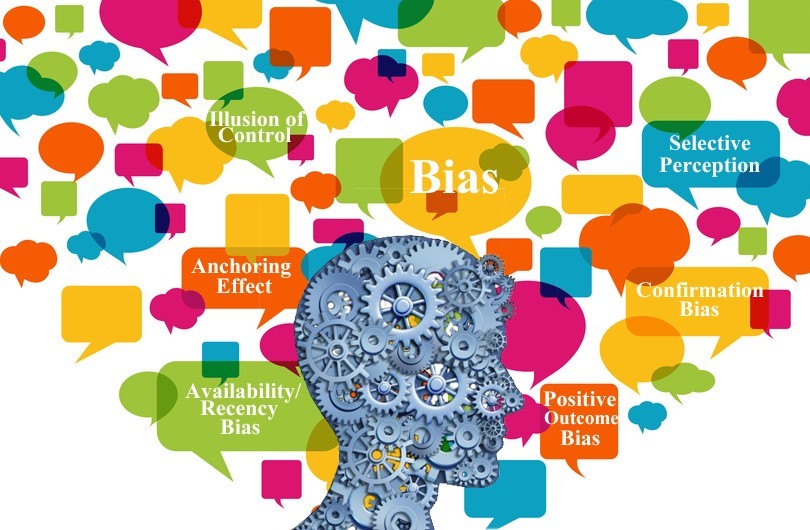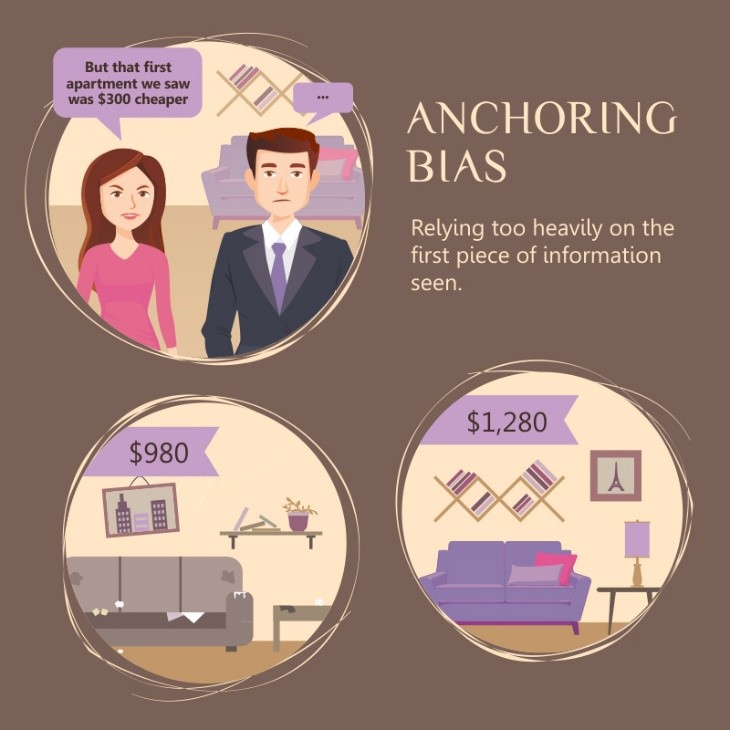Does Cognitive Bias Make Software Testers Miss Out Bugs?

Software testing has witnessed a revolution in the past decade or so, with the introduction of test automation, through advanced test automation tools. Test automation today is powered by advanced technology that opens doors to new possibilities, like executing multiple test cases simultaneously, testing across multiple browsers and platforms, integrations with other popular tools and recording test scripts for reuse. What’s more, QA teams today can use these tools to fetch detailed reports for the analysis of test case executions and understanding at which step the test has failed, as well as the possible root causes. Yet, in spite of having such advanced technology within our reach, we still see testers ask themselves the question ‘What made me miss this bug?’
Why do Testers Miss Bugs?
What is Cognitive Bias?

Source: https://bit.ly/2WsS248
Wikipedia defines cognitive bias as a “systematic pattern of deviation from norm or rationality in judgment. Individuals create their own “subjective social reality” from their perception of the input”. What this implies is that cognitive bias makes individuals to think irrationally or illogically which results in an error in judgement.
The human brain and how it works never fails to surprise us and the way biases influence our thought process is just another intriguing aspect. Talking about how cognitive bias influences testers, testers are governed by their biases when it comes to where to look for bugs, which functionalities would require a more intensive testing approach, how the user is likely to interact with the software or application, an assumption about the app based on who developed it, and the list goes on… What makes it all the more interesting is that there are not one or two but an entire set of different types of cognitive biases!
Different Types of Cognitive Bias
So, let’s learn a little about the ones that are the most commonly found and understand how they are likely to affect the thought process of QA professionals.

Source: https://bit.ly/2U2T7D1
In the testing world, this bias would make testers spend less time testing the code by a developer who he thinks writes impeccable codes!

Source: https://bit.ly/2uzJP2i
It is a term that implies missing out the details, even though they are the most obvious, just because one is not looking for them. In other words, it is referred to the phenomena of missing out on details that one would not have missed out if there wasn’t a lack of attention.
When it comes to QA, this could mean focusing all attention on testing a new update or a newly added feature and missing out on defects in other functionalities or aspects of the software.

Source: https://bit.ly/2FI8Mih
The negativity bias and the optimism bias are opposite of one another and which one applies to an individual is likely to be influenced by his/her general outlook towards life. While the negativity bias makes an individual expect a negative outcome for every endeavor, the optimism bias makes him/her too optimistic.
In the world of software testing, negative bias may make a tester have low motivational levels to go the extra mile to test for bugs as they believe it’s not possible for them to create a bug free software anyway. The optimism bias, on the other hand, may make the tester feel so optimistic when they find no bugs within the first few hours of testing, that they start believing the software is virtually free of any defects whatsoever, ignoring the possibility of defects in other areas of the software.

Source: https://bit.ly/2FsURes
The congruence bias makes an individual to look for possibilities defined by his/her own hypothesis, without considering the possibilities as defined by any other hypotheses. In other words, it means creating a positive outlook about something if it meets all the criteria one has in his/her head, without even considering the fact that those criteria might not be enough to form an informed opinion.
In the testing world, the congruence bias makes testers test a software only for the expected behavior, thus completely missing out on the aspect of negative testing. This way, they can never be sure if the software is behaving in ways it SHOULD NOT.

Source: https://bit.ly/2YxMkja
A very commonly observed phenomenon, the bandwagon effect is a term that is used to describe how we as individuals tend to get influenced by the opinions of others. This is what makes people buy products that are advertised by the influencers who are popular and are idolized by us.
When it comes to testing, the bandwagon effect comes into play when a tester is influenced by the opinions of his peers or team members and may not spend much time and effort in testing a software if the team members feel it is relatively bug free.

Source: https://bit.ly/2TZYPFy
Also referred to as the resemblance bias, the representative bias refers to looking at a situation or scenario with an outlook that is influenced by one’s experience in similar situations. In other words, individuals affected by the representative bias use their past experience with similar situations as a representative for the actions to be taken in the current situation.
In the testing world, QA professionals may only look for a standard set of errors in a web application testing project, instead of treating each web application as an individual software that may have its unique set of defects and issues.

Source: https://bit.ly/2gGXJfo
The anchoring bias refers to an individual getting influenced by the very first piece of information about a product, a person or a place. This first piece of information that they come across can be a numerical value, a certain quality or the first review – it can be anything. The thinking process of the individual is then anchored to this bit of information and is also influenced by it.
The Final Word
So, you see that there are quite a few different types of biases that can affect testers and hinder their ability to find the maximum number of defects and bugs. To minimize the influence of the biases on our rational thinking, it is essential that we train our mind to look beyond what the biases make us to believe. When a tester identifies that his/her rational thinking is being affected by a particular bias, it becomes easier to overcome it.
